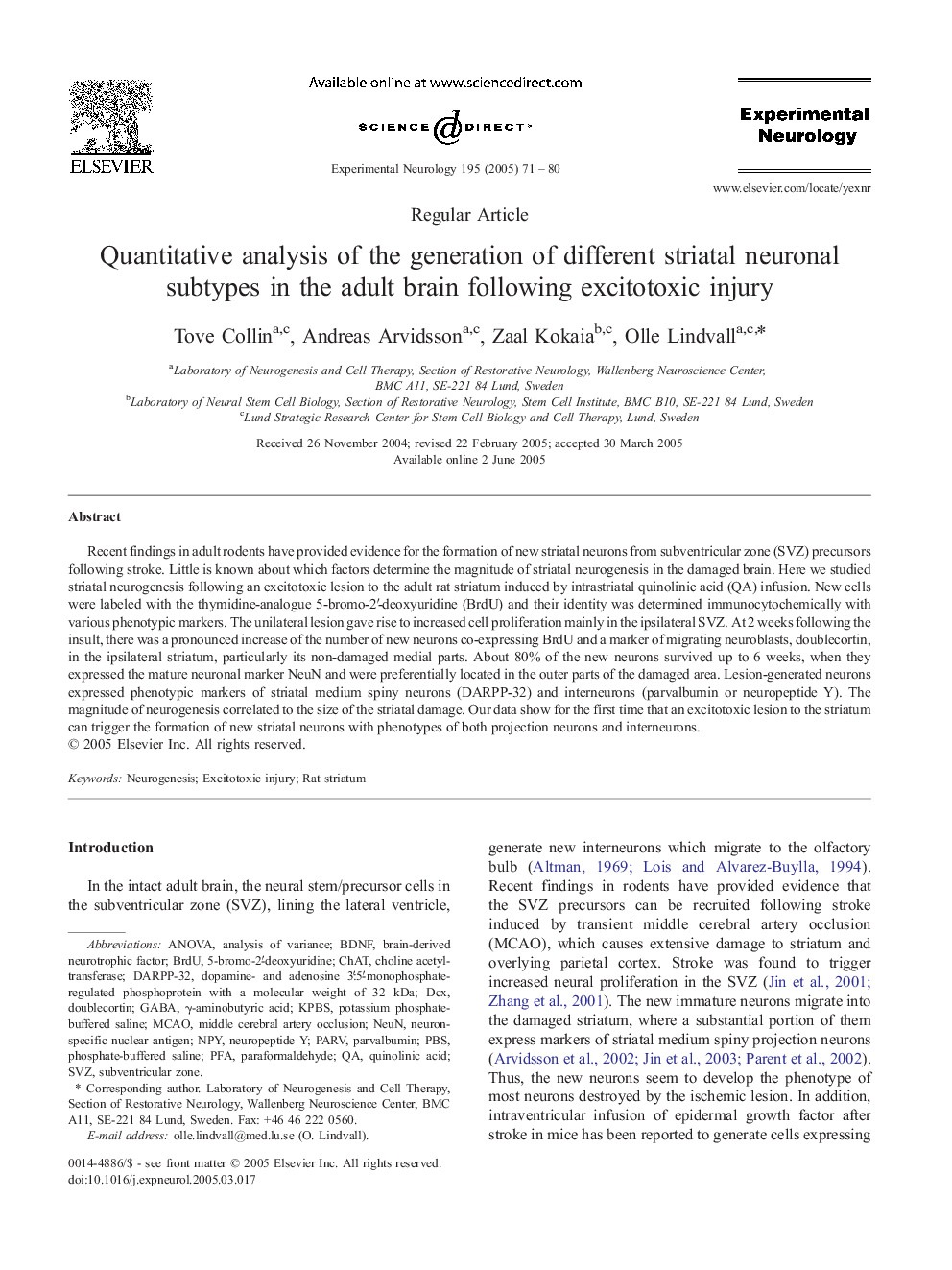| Article ID | Journal | Published Year | Pages | File Type |
|---|---|---|---|---|
| 9191851 | Experimental Neurology | 2005 | 10 Pages |
Abstract
Recent findings in adult rodents have provided evidence for the formation of new striatal neurons from subventricular zone (SVZ) precursors following stroke. Little is known about which factors determine the magnitude of striatal neurogenesis in the damaged brain. Here we studied striatal neurogenesis following an excitotoxic lesion to the adult rat striatum induced by intrastriatal quinolinic acid (QA) infusion. New cells were labeled with the thymidine-analogue 5-bromo-2â²-deoxyuridine (BrdU) and their identity was determined immunocytochemically with various phenotypic markers. The unilateral lesion gave rise to increased cell proliferation mainly in the ipsilateral SVZ. At 2 weeks following the insult, there was a pronounced increase of the number of new neurons co-expressing BrdU and a marker of migrating neuroblasts, doublecortin, in the ipsilateral striatum, particularly its non-damaged medial parts. About 80% of the new neurons survived up to 6 weeks, when they expressed the mature neuronal marker NeuN and were preferentially located in the outer parts of the damaged area. Lesion-generated neurons expressed phenotypic markers of striatal medium spiny neurons (DARPP-32) and interneurons (parvalbumin or neuropeptide Y). The magnitude of neurogenesis correlated to the size of the striatal damage. Our data show for the first time that an excitotoxic lesion to the striatum can trigger the formation of new striatal neurons with phenotypes of both projection neurons and interneurons.
Keywords
PBSSVZKPBSMCAONeuNNPYPFADcxDARPP-325-bromo-2′-deoxyuridineBDNFγ-aminobutyric acidQuinolinic acidmiddle cerebral artery occlusionBrdUanalysis of varianceANOVAdoublecortinBrain-derived neurotrophic factorPhosphate-buffered salinesubventricular zoneRat striatumNeurogenesisparaformaldehydeParvParvalbuminpotassium phosphate-buffered salineChATcholine acetyltransferaseGABANeuropeptide Y
Related Topics
Life Sciences
Neuroscience
Neurology
Authors
Tove Collin, Andreas Arvidsson, Zaal Kokaia, Olle Lindvall,
